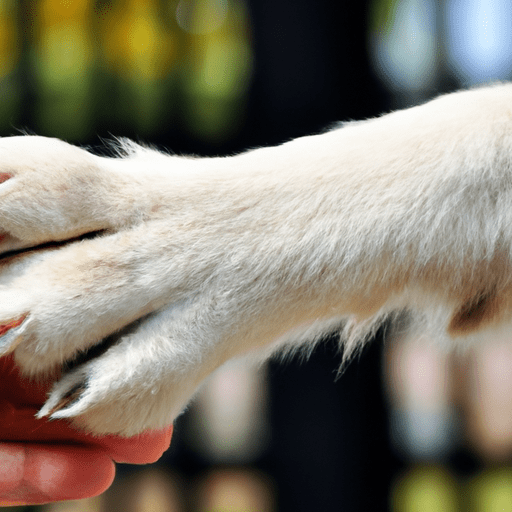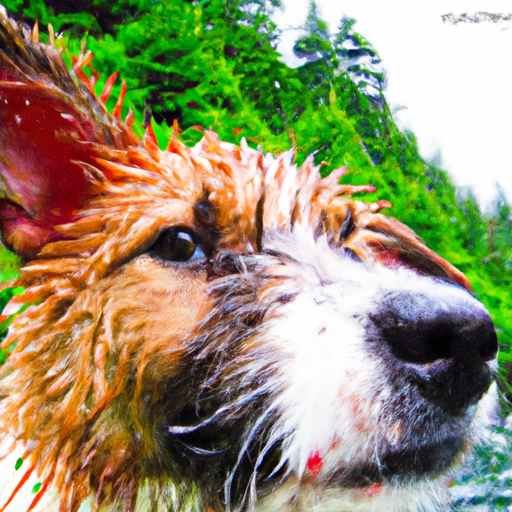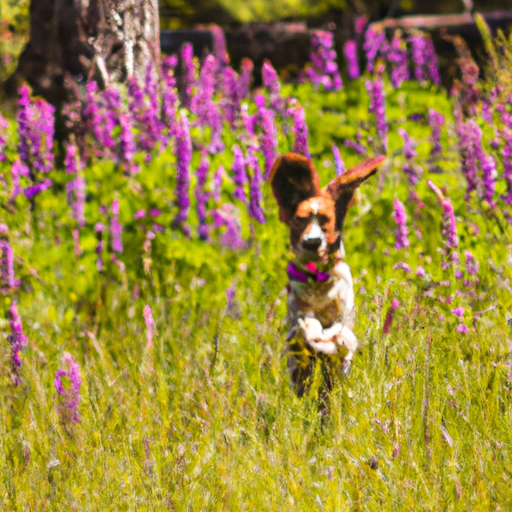Are you a dog owner who dreams of impressing your friends and family with your canine's array of impressive tricks? Look no further! This article will provide you with essential tips and techniques to master the art of teaching your furry friend new tricks. From simple commands like “sit” and “stay” to more advanced moves like “roll over” and “fetch,” you'll learn the secrets behind effective dog training. Get ready to unleash your dog's hidden potential and become the ultimate dog trainer!
Getting Started with Dog Training
1.1 Choosing the Right Training Method
When it comes to dog training, there are various methods you can choose from. It's important to select a training method that aligns with your dog's personality, as well as your own preferences and values. One popular method is positive reinforcement, which involves rewarding your dog for desired behaviors. This method focuses on providing treats, praise, or playtime when your dog correctly performs a command. Another technique is clicker training, where a clicker is used to mark the desired behavior, followed by a reward. This method helps to clearly communicate to your dog when they have done something right. Luring and shaping is another approach, where you use treats or toys to guide your dog into desired positions or actions. Lastly, targeting involves teaching your dog to touch a specific object with their nose or paw, which can be useful in training more complex behaviors.
1.2 Setting Clear Training Goals
Before you begin training, it's essential to establish clear goals for what you want to teach your dog. Start by determining the basic commands you want your dog to understand, such as sit, stay, lie down, come, and shake hands. These commands build the foundation for more advanced training later on. Additionally, consider any specific tricks or behaviors you would like your dog to learn, such as rolling over, fetching, or jumping through hoops. By setting clear goals, you will have a roadmap to follow during your training sessions, making it easier to track your dog's progress and celebrate achievements along the way.
1.3 Understanding Dog Psychology
To effectively train your dog, it's crucial to have a basic understanding of dog psychology. Dogs are pack animals, and they instinctively look for a leader to follow. Establishing yourself as the leader through consistent, kind, and confident training methods will help build trust and cooperation between you and your furry friend. Dogs also respond well to clear communication and positive reinforcement. By rewarding good behavior and ignoring or redirecting unwanted behavior, you can shape their actions in a positive way. Additionally, dogs thrive on routine and repetition, so it's important to establish a consistent training schedule and practice commands regularly for them to fully grasp and remember what is being taught.
Basic Training Techniques
2.1 Positive Reinforcement
Positive reinforcement is a highly effective training method that focuses on rewarding your dog for correct behavior. By associating desired actions with rewards such as treats, praise, or playtime, you can motivate your dog to repeat those behaviors. For example, when teaching your dog to sit, give them a treat and praise when they sit on command. Over time, your dog will learn to associate sitting with positive outcomes and will be more likely to sit when asked. Remember to use consistent cues and rewards to reinforce the desired behavior.
2.2 Clicker Training
Clicker training is another popular technique that relies on a small handheld device called a clicker. The clicker emits a distinct sound when pressed, serving as a marker to communicate to your dog that they have done something right. The click sound is immediately followed by a reward, typically a treat. By pairing the click sound with positive reinforcement, your dog learns to associate the click with a job well done. Clicker training allows for precise timing and clear communication, making it effective for teaching new tricks and behaviors.
2.3 Luring and Shaping
Luring and shaping involve using treats, toys, or hand gestures to guide your dog into desired positions or actions. For example, when teaching your dog to lie down, you can use a treat to lure them into the down position, gradually moving the treat towards the ground. Once your dog is in the down position, reward them with the treat and praise. Shaping, on the other hand, involves breaking down a complex behavior into smaller steps and rewarding your dog for completing each step. For instance, if you want to teach your dog to fetch, you can start by rewarding them for picking up a toy, then for moving towards you with the toy, and finally for releasing the toy into your hand.
2.4 Targeting
Targeting is a training technique where you teach your dog to touch a specific object, such as your hand or a target stick, with their nose or paw. This skill can be useful in a variety of training scenarios. To train targeting, start by presenting the target object and rewarding your dog for touching it. Gradually move the target object to different locations and reward your dog for correctly targeting it. Once your dog understands the concept of targeting, you can use it to teach more complex tricks or behaviors, such as turning on the light switch or closing a door.
Teaching Simple Tricks
3.1 Sit
Teaching your dog to sit is one of the most fundamental commands and sets the foundation for other behaviors. To teach your dog to sit, grab a few treats and stand in front of your dog. Hold a treat close to their nose and slowly move it up and towards the back of their head. As their head follows the treat, their bottom will naturally lower into a sitting position. Once they sit, say “sit” and give them the treat immediately. Repeat this process several times, gradually phasing out the treat lure until your dog can sit reliably with just the verbal cue.
3.2 Stay
The “stay” command is crucial for keeping your dog in one place, whether it's while you answer the door or cross the road. Begin by giving your dog the “sit” command. Once they are in a sitting position, hold your hand up, palm facing them, and say “stay” in a calm but firm tone. Step back a short distance and return to your dog after a few seconds. If they remain in the sitting position, reward them with praise and a treat. Gradually increase the duration and distance before returning to your dog. Practice this command in different environments and gradually introduce distractions to help your dog master the stay command.
3.3 Lie Down
Teaching your dog to lie down is a useful command that can be used in various situations, such as when you need your dog to settle down or when you want to provide them with a comfortable resting position. Start with your dog in a sitting position. Hold a treat close to their nose and then slowly move it down towards the ground, between their front paws. As your dog follows the treat down, their body will naturally lower into a lying position. Once they are lying down, say “down” and give them the treat. Practice this command repeatedly until your dog can easily lie down on command.
3.4 Come
The “come” command ensures that your dog returns to you promptly when called. Begin training in a quiet and enclosed area to minimize distractions. Say your dog's name and the word “come” in a happy and inviting tone, while crouching down and opening your arms. When your dog comes to you, reward them with praise, petting, and treats. Gradually increase the distance between you and your dog as they become more reliable in responding to the come command. It's important to make coming to you a positive experience, so avoid scolding or punishing your dog when they respond to your call, even if they took longer than expected.
3.5 Shake Hands
Teaching your dog to shake hands is a fun and impressive trick that can also serve as a friendly greeting gesture. Start with your dog in a sitting position. Hold a treat in your closed hand and present it to your dog, allowing them to sniff and paw at it. As soon as your dog touches your hand with their paw, open your hand and say “shake.” Reward them with the treat and praise. Repeat this process, gradually adding the verbal cue before presenting your hand. With practice, your dog will learn to offer their paw for a shake on command.
Advanced Training Methods
4.1 Backward Chaining
Backward chaining is a training method that involves teaching a behavior in reverse order. This technique is useful for complex behaviors that have multiple steps. Start by teaching the last step of the behavior sequence, then add the second-to-last step, and so on, until your dog can successfully perform the entire behavior. For example, if you want to teach your dog to jump through a hoop, you would first reinforce them for jumping through the hoop from the opposite side. Once they have mastered this step, add the previous step, such as running towards the hoop, and continue gradually adding each preceding step until the full behavior is achieved.
4.2 Capturing
Capturing is a training method that involves identifying and rewarding your dog for naturally occurring behaviors that you want to reinforce. This technique requires keen observation and timing. For example, if you want to teach your dog to give you a high-five, you would wait for them to raise their paw naturally and then immediately mark the behavior with a click or a verbal cue, followed by a reward. Capturing allows you to build on behaviors that your dog already naturally exhibits, resulting in a more enjoyable and less frustrating training experience.
4.3 Free Shaping
Free shaping is a training technique that involves rewarding your dog for offering behaviors voluntarily without any luring or prompting. This method allows your dog to think and problem-solve, which strengthens their cognitive abilities. To use this technique, start with a behavior that your dog naturally performs, such as touching an object with their paw. When your dog performs the behavior, mark it with a click or a verbal cue and promptly reward them. Gradually shape this behavior into the desired action by selectively rewarding variations that bring them closer to the final behavior. Free shaping requires patience and the ability to break down complex behaviors into smaller, achievable steps.
4.4 Chaining
Chaining is a training method that involves linking together multiple behaviors to create a longer sequence or routine. This technique is useful for tasks that require a series of actions to be performed in a specific order. For example, if you want to teach your dog to retrieve the newspaper, you would break down the behavior into individual steps, such as picking up the newspaper, bringing it to you, and releasing it into your hand. By training each step separately and then gradually linking them together, your dog will learn to perform a complex behavior smoothly and consistently.
Problem Solving and Troubleshooting
5.1 Dealing with Lack of Motivation
If your dog seems unmotivated during training sessions, it's important to reassess your approach. Ensure that the training environment is free from distractions and that your dog is well-rested and in a comfortable state. It may also help to use higher-value treats or toys as rewards to increase motivation. Breaking down the training into smaller steps and celebrating each success can also boost your dog's motivation. Remember to keep training sessions short and enjoyable to maintain your dog's attention and enthusiasm.
5.2 Addressing Fear and Anxiety
If your dog displays fear or anxiety during training, it's crucial to approach the issue with patience and understanding. Gradually expose your dog to the trigger in a controlled and positive manner, using treats and praise to create positive associations. If the fear or anxiety persists, consult with a professional dog trainer or behaviorist who can provide specialized guidance and support. They may recommend desensitization or counter-conditioning techniques to help your dog overcome their fears and anxieties.
5.3 Overcoming Distractions
When training in environments with distractions, it's vital to start with minimal distractions and gradually increase the level of challenge. Focus on reinforcing basic commands and behaviors in low-distraction settings before progressing to more challenging environments. Use high-value treats or toys to maintain your dog's attention and redirect their focus back to you when distractions arise. Consistency and repetition are key when training dogs to work through distractions, so be patient and persistent.
Training Multiple Tricks
6.1 Sequencing Tricks
Sequencing tricks involves teaching your dog to perform a series of behaviors in a specific order. Start by breaking down each behavior into separate components and train them individually. Once your dog has mastered each behavior, you can start linking them together in a sequence. Use clear verbal cues or hand signals to indicate the transition between behaviors. For example, if you want your dog to spin and then jump over a hurdle, teach each behavior separately and then introduce a verbal cue or hand signal to indicate when to move from spinning to jumping.
6.2 Proofing Tricks
Proofing tricks is the process of teaching your dog to perform a behavior under different conditions, regardless of distractions or environmental changes. Start by practicing the trick in a controlled environment without distractions. Once your dog can reliably perform the behavior in this setting, gradually increase the level of distractions or change the training location to different environments. This helps your dog generalize the behavior, ensuring they respond consistently, regardless of the circumstances. It may be necessary to go back to smaller steps or use higher-value rewards when proofing tricks in more challenging situations.
6.3 Generalizing Behaviors
Generalizing behaviors means teaching your dog to respond to commands or cues regardless of where they are or who gives the command. Start with reinforcing the behavior in a quiet and familiar environment. Once your dog consistently responds to the commands in that setting, gradually introduce new locations and people. Practice the commands in various environments with different family members and friends. This will help your dog understand that the commands apply universally, regardless of the specific circumstances.
Setting Realistic Expectations
7.1 Understanding Breed and Individual Differences
When it comes to dog training, it's important to recognize that different breeds and individual dogs have varying strengths and temperaments. Some breeds may excel in certain types of training, such as agility, while others may have a natural inclination towards therapy work. Understanding your dog's breed characteristics and individual personality can help you set realistic expectations and tailor your training approach accordingly. Be patient and remember that each dog learns at their own pace, so it's important to celebrate small victories and focus on progress rather than perfection.
7.2 Patience and Consistency
Patience and consistency are key ingredients when it comes to successful dog training. Dogs need time to understand and internalize new commands and behaviors. Be patient with your dog, and avoid getting frustrated or overwhelmed. Consistency is equally important. Use the same verbal cues and hand signals each time to avoid confusion. Stick to a regular training schedule and practice commands regularly, even after your dog has mastered them. Dogs thrive on routine and repetition, so maintaining consistency will lead to better results.
7.3 Celebrating Small Victories
As you embark on your dog training journey, it's crucial to celebrate each milestone and small victory along the way. Recognize and reward your dog's progress, no matter how small it may seem. This positive reinforcement helps to build confidence and motivation in your dog. Remember that dog training is a gradual process, and every step forward is worth celebrating. By focusing on the positive aspects of your dog's training, you create a happier and more rewarding experience for both you and your furry companion.
Training for Special Purposes
8.1 Agility Training
Agility training is a thrilling and fast-paced sport that involves navigating an obstacle course, including jumps, tunnels, and weave poles. This activity builds your dog's physical fitness, mental agility, and strengthens the bond between you and your dog. If you are interested in pursuing agility training, consider enrolling in a specialized agility class where you will learn the proper techniques and equipment for this exciting sport. Remember to start with basic obedience training before adding agility elements to ensure safety and control during the training process.
8.2 Therapy Dog Training
Therapy dog training focuses on preparing dogs to provide comfort and support to people in various settings, such as hospitals, nursing homes, and schools. These dogs must have a calm and friendly temperament and be comfortable interacting with people of all ages and abilities. Training for therapy dogs typically involves obedience training, socialization, and exposure to different environments and scenarios. If you believe your dog has the right temperament for therapy work, consider seeking a therapy dog training program or working with a qualified trainer who can guide you through the process.
8.3 Service Dog Training
Service dog training is a specialized form of training that prepares dogs to assist individuals with disabilities. These dogs are trained to perform specific tasks, such as guiding visually impaired individuals or alerting individuals with hearing loss to sounds. While training a service dog requires expert guidance, understanding basic obedience commands and having a calm temperament are essential prerequisites. If you think your dog may have the potential to become a service dog, consult with professional trainers and organizations that specialize in service dog training for further guidance.
Expert Tips and Advice
9.1 Choosing the Right Training Equipment
When it comes to training equipment, it's important to choose tools that are safe, effective, and humane. For basic obedience training, a well-fitting collar or harness and a standard leash are usually sufficient. However, certain situations may require specialized equipment, such as a clicker for clicker training, treat pouches for easy treat access, or target sticks for targeting exercises. Before purchasing any training equipment, do thorough research, read reviews, and consider seeking advice from professional trainers to ensure that you are selecting the best tools for your specific training needs and your dog's comfort.
9.2 Finding Professional Help
If you encounter difficulties or feel overwhelmed during the training process, it's essential to seek professional help. A qualified dog trainer or behaviorist can provide valuable guidance and personalized training plans to address your dog's specific needs. Look for trainers who use positive reinforcement methods and have experience working with your dog's breed or the specific behaviors you want to target. Attend group classes or private sessions to receive hands-on coaching and feedback. Remember, investing in professional help can greatly benefit you and your dog by ensuring that you are using effective and humane training techniques.
9.3 Continuing Education and Professional Development
Dog training is an ever-evolving field, and it's important to stay updated on the latest training methods and techniques. Take advantage of continuing education opportunities, such as workshops, seminars, and online courses, to expand your knowledge and refine your training skills. Stay connected with the dog training community by joining online forums or participating in local training clubs. Engage in ongoing professional development to enhance your abilities as a trainer and provide the best possible training experience for your dog.
Conclusion
10.1 Reflecting on the Journey
Dog training is an exciting and rewarding journey that strengthens the bond between you and your furry companion. From basic obedience to advanced tricks and specialized training, each step brings new challenges and triumphs. Reflect on the progress you and your dog have made, and celebrate the milestones along the way. Embrace the journey as an opportunity to learn, grow, and build a lasting relationship based on trust, communication, and mutual respect.
10.2 Celebrating the Bond with Your Dog
Above all, training your dog is an opportunity to deepen your bond and create a harmonious relationship based on love and understanding. Cherish the moments spent together, whether it's during training sessions, leisurely walks, or playtime. The trust and connection you develop through training will enhance your life together and create memories that will last a lifetime. Celebrate the unique bond you share with your dog, and continue to nurture it through ongoing training, companionship, and love.






